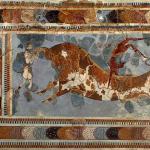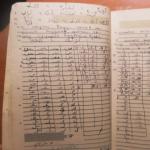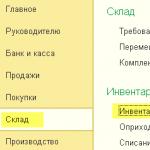The main feature of Romanian cuisine is a wide variety of dishes. Romanian cuisine has been shaped by many cultural influences: the ancient Greeks with whom the Romanians traded, the Romans who gave the country its name, the Saxons who settled in southern Transylvania, and its Slavic and Hungarian neighbors. All these cultures gradually merged into the rather diverse Romanian culinary tradition.
We hope that food tasting is a must-do for you when traveling to another country. - not an exception! It may seem strange that when you come to Romania you will only eat pizza, go to McDonald's or Chinese restaurants simply because you don't know what to try.
Sarmale
I would like to start with Sarmale. Basically, it is minced meat wrapped in cabbage or grape leaves. Pairs well with polenta (water, salt and cornmeal) and sour cream.
Meat dishes

Stewed chicken or pork in addition to vegetables is very popular in restaurants. The hallmark of Romanian cuisine is Mamaliga - a garlic soup made from hot chili peppers and vinegar.
Karnati, a dish made from pork liver and intestines, is also a favorite. Other meat delights are Frigarui (meat skewers), Mititei (grilled meat rolls) and Schnitzel (breaded veal or beef cutlets).
Vegetable dishes

Several options for vegetarians: Giveoch (roasted vegetable salad), deviled eggs, Mamaliga ((bulz de mamaliga cu branza) is polenta mixed with cheese.
Soups

In Romania, there is an opinion that there is no meal without soups. Chicken, beef, vegetable and bean soups are very popular.
Dessert

In Romania, there is a wide selection of pancakes with different fillings. Other famous desserts include Baklava (very sweet flaky pastry), Pandispan (sponge cake), gingerbread, Papanasi (jam donut topped with sour cream) and rice pudding.
Alcohol

And what about without alcoholic drinks? A wide variety of wines can be found in Romania. But the main drink here is Tsuika. It is made from plums, apples or peaches.
Because of the aroma of this drink, Tsuika is often called "rocket fuel".
In traditional restaurants in Romania you can hear Romanian folk music. Music leaves an unforgettable impression!
We hope that our list has piqued your interest in Romanian cuisine. Ask our staff about restaurants to visit and you will have an unforgettable evening! As we say in Romania: Pofta Buna!
For a long time, like a sponge, it absorbed the traditions and principles of cuisines from other countries of the world. After all, it is located exactly where a busy trade route “from the Varangians to the Greeks” once passed. As a result of many years of such interethnic interactions, today Romania has received a simple and satisfying cuisine, which, at the same time, has only one characteristic characteristic of it.
Romanian dishes, desserts, drinks
Fresh vegetables, meat (mainly pork, beef and poultry), fish, potatoes, dairy products (especially sheep's milk cheese) and queen corn are the basis of Romanian cuisine. The latter product in Romania is used to prepare anything from porridges to puddings.
The star of the first course menu in this country are the so-called chorbs - soups with brine, kvass or fermented milk products.
Main courses are often cooked on a grill, and garlic sauces are often used as an accompaniment. Among the hot dishes in Romania, you should try beef with flour dumplings and red pepper “paprikash de vintel”, roast vegetables and meat “tocane”, moussaka, charcoal-fried cutlets “mititei” with mustard and more. And you should try the meat dish “sarmale”, if only because it takes three whole days to prepare!
Romanian cuisine is characterized by an abundance of recipes made from flour, in particular desserts: cookies, cakes, muffins and pies, with cheese, jam, meat and fruit. Those with a sweet tooth should definitely try the local savarnes and brioche at least once.
Romanians prefer coffee and wine as drinks; they also drink beer (Ursus is considered the best). In addition, among the local alcohol you can try plum moonshine “Tsuika” and local brandy “Vinars”.
The best Romanian recipes
Popular Romanian dishes can be prepared without much difficulty in the kitchen and in our latitudes.
Chorba soup
Romanians' favorite soup can be anything: mushroom, meat, fish or vegetable. We invite you to try cooking meat chorba. For this you will need:
- minced meat - 70 g
- minced meat - 70 g
- rice - 30 g
- chicken eggs - 2 pcs.
- flour - 50 g
- yogurt - 60 g
- butter - 25 g
- onions - 50 g
- parsley - 1 bunch
- water - ¾ l
- pepper and salt - to taste
The meat and minced meat are mixed, finely chopped onion, parsley and egg white, as well as salt and pepper are added to the resulting mass. This is formed into balls, which are then rolled in flour.
Place parsley and onions in a pan of salted water, and as soon as the water boils, place the dumplings in there for half an hour. Then add the washed rice and cook the soup for another 10 minutes.
And then all that remains is to mix the egg yolks, yogurt and flour with a couple of spoons of soup, pour everything into the pan and cook for a few more minutes. The final touch is to add pepper, butter and sour cream to the chorba.
Hominy
To please yourself and your loved ones with the famous Romanian corn porridge, you will need only four ingredients:
- corn flour - 500 g
- water - 1.5 l
- butter - 100 g
- salt - to taste
Pour corn flour into a pan of salted boiling water and stir it with a wooden spatula so that there are no lumps in the porridge. Afterwards, leave to simmer over low heat for 30-40 minutes without covering the pan with a lid. Before serving, you can add butter to the porridge.
You can combine mamalyga with anything: fish, feta cheese, cabbage rolls, first courses, and it can be either hot or cold - no matter how you look at it, it will still be delicious.
Kadaif in Romanian
This Romanian variation of the oriental sweet, kadaif, takes just 40 minutes to prepare. So, for a great dessert you will need:
- powdered sugar - 1 tbsp. l.
- cream (thicker) - 1 cup
- butter - 2 tbsp. spoons
- flour - 1- 1.5 cups
- chicken eggs - 2 pcs.
- sugar - 150 g
- vanillin - to taste
- salt - 1 pinch
- water - 1.5 cups
First of all, you need to mix flour and eggs, add salt. Vermicelli is prepared from the resulting dough, which is first thoroughly dried, then fried in oil until golden brown and placed in a mold, leveling the surface.
Then the syrup is prepared by mixing sugar, vanillin and water. Hot syrup is poured over the noodles and baked at 180°C until it is absorbed. The prepared dessert is cut into squares, cooled, and decorated with cream whipped with powdered sugar and fresh berries or fruits.
Best Romanian restaurants
Nowhere in the world are Romanian cuisine prepared as deliciously as, naturally, in Romania itself. If you are lucky enough to visit here, be sure to check out the local restaurant.
One of the most popular places in the country is the establishment in the Stibrei Palace, which today acts as a hotel.
In addition, in recent years, the list of the best restaurants in Romania included such establishments as Belvedere, Cantine de Nicolai, Bistro Epoque, Benihana, Osho, Ici Et La, Casa cu Flori and Osteria Gioia.
Finally, speaking of Romanian establishments, we cannot fail to mention the controversial Bucharest establishment called Count Dracula Club, where you can taste “Dracula” (or Transylvanian) Romanian cuisine. Firstly, it is atmospheric: of its three halls, one is hunting, the second is medieval, and the third is Transylvanian. Secondly, you most likely have never tried local dishes anywhere before. Take, for example, dishes from pheasant, chamois, elk or bear's paw, which Count Dracula himself allegedly loved. Well, you will be offered to wash it all down with a special “Vampire” wine, similar in color and consistency to blood. The most interesting thing in the restaurant happens after midnight, when the entertainment program not for the faint of heart begins: mourning music sounds, the coffin lid creaks, and then Dracula himself appears from it.
This is what Romanian cuisine is like: simple at first glance, but in the end quite unusual and very tasty.
Romania is one of the Balkan countries with an interesting history and diverse nature. Chernomorskoe attracts with its clean and warm sea, the same clean sandy beaches and excellent resort infrastructure. In Bukovina you can see unique Christian monasteries, painted on the outside with frescoes that retain their colors over the centuries. The Romanian Carpathians contain a third of Europe's mineral water reserves. Balneological and thermal resorts treat a wide range of diseases. The picturesque nature and mountain air help them in this. Fans of alpine skiing also come to the Carpathians; there are many slopes for any level of training.
The main tourist mecca is a mysterious and famous region of the country. Castles and fortresses among mountains covered with dense forests, cities with beautiful medieval architecture. Transylvania is home to the most popular tourist route, the Dracula Tour.
Any type of tourism becomes gastronomic, because travelers need food with national flavor. There is a lot to try in Romania!
Food in Romania
What is the first association when you hear the word Romania? Dracula and hominy. The country's main cereal crop, corn, is widely used in a wide variety of dishes. But it is mamalyga that is the hallmark of Romanian cuisine and the personification of its basic principles: delicious food made from simple ingredients. Most other dishes were born under the influence of Turkish, Hungarian and German cuisine.
Romanian cuisine is replete with vegetables; they are used in almost all first and second courses, at least as a side dish. Stuffed peppers, zucchini, eggplants and even kohlrabi, excellent garlic sauce and, of course, moussaka. Trying combinations of vegetables grown under the Romanian sun is a real pleasure.
Among dairy products, soft cheeses are interesting; you should definitely try feta cheese. For meat dishes, poultry or pork is used. Except Transylvania, the most famous and mysterious region of Romania. There, in the spirit of Count Dracula, they skillfully cook a lamb in clay or on a spit and roast bear paws for display to tourists, emphasizing the flavor of travel through the castles of the famous vampire.
On the coast, fish and seafood are considered the main dishes. The assortment is huge. Gifts of the Black Sea - traditional flounder, mullet, mackerel, as well as shrimp and mussels. Food from the bottom of the sea is expertly prepared - Romanian chefs do not miss the leading note, despite the spices and seasonings. River fish is even tastier. The second longest European river is home to sturgeon, catfish, pike and a fishermen's dream - beluga. Therefore, fishing tours to the Danube Delta attract amateurs from many countries. The fish is prepared in the favorite Romanian way - on the grill, and is used to make excellent stews with vegetables. River fish in a special brine is called saramura, it’s not for everybody, but it’s worth a try.
Top 10 dishes of Romanian cuisine
There are many options. The most national dish is based on hard or soft corn porridge. It is boiled, fried or baked. Depending on the method of preparation, it can be a pudding, a snack, or even bread. The main colorful action is cutting hominy in the old way. A harsh thread is wound around the index fingers and the loaf is cut into even pieces.
Urda
Sometimes it sounds like vurda. Cheese made from sheep's milk is grayish in color. You can try kashkaval from the same milk; it is yellow in color and looks more appetizing, but both are tasty. Like telemea, the creamy cheese is already white in color.

A source of pride for local cuisine. This is a collective name for soups, rather sour stews. The peculiarity is in the dressing. It is infused wheat bran. The broth can be vegetable or meat. Other ingredients range from gnocchi and beans to tomatoes, zucchini and spinach. Tender chorba de burte made from beef stomach or chorba with vegetables, cheese and whey are appreciated by exotic lovers. Absolutely everyone likes chorba in beef broth with an incredibly wide range of vegetables. A kaleidoscope of such stews allows you to try a new chorba every day of your stay in the country.

Small cylinders, similar to small sausages without casing. They are cooked from minced meat on a grate - a thick metal grate over charcoal made from beech, walnut and other hard woods. Mititei is always served golden brown, very juicy, with garlic and seasonings.
Angemacht
It would seem that someone can be surprised with stewed meat. It's all about the white sauce with the addition of lemon. This sour sauce gives the meat a special taste and once again proves that delicious dishes come out of ordinary products. Among the stews, you should also try givech (tender meat with vegetables) and chulama, where mushrooms are added to meat and vegetables.

The composition is similar to dolma: the same minced meat with rice. The leaves can be grape leaves or pickled cabbage leaves. The principle of preparation, in broth from ribs, puts sarmale in the category of dishes that must be tried. In some areas of Romania it is considered a wedding treat.
Cholan de porc
Melt-in-your-mouth pork leg, well roasted and smoked. The traditional side dish for it is yakhnia (stewed beans). The side dish seems a little heavy, but, in combination with the leg, it simply amazes with its excellent taste.
Friguray
What we call kebabs. Meat on skewers cooked on charcoal. The most common and at the same time the most delicious is considered to be liver friguray.
Transylvanian apple pie
Made from shortcrust pastry with the most delicate apple filling, to which raisins and cognac are added. The honey-almond filling is reminiscent of baked goods from German cuisine, from where it was borrowed, as is the apple strudel, another cue from Austro-German cooking.

Turkish heritage of Romania. Cakes for which the dough is rubbed with thin threads on a special device. The finished cakes are dipped in fruit syrup. From Turkish confectioners, Romanians also adopted baklava, Turkish delight and gogoshi. The latter can also be considered a collective name. In different parts of Romania, this is the name given to donuts and shortcakes with nuts.
FOOD IN ROMANIA
Most restaurants in Romania, especially outside major cities, offer only Romanian food. The cities, and especially Bucharest, have a wide selection of international cuisine (Chinese, Mediterranean, French, etc.).
The average bill in an inexpensive Romanian cafe is approximately 20 lei (180 rubles) per person; a good lunch or dinner for two in a mid-level restaurant will cost about 80 lei (720 rubles).
International fast food restaurant chains are also present in the country. A combination lunch at McDonald's costs about 16-18 lei.
Information on the cost of food in Romanian stores can be found in the article Prices in Romania.
Romanian cuisine and traditional Romanian dishes

 (spicy sausages), sandwiches with ham, cheese and French fries, various soups (with meatballs, with meat and rice, etc.) and salads.
(spicy sausages), sandwiches with ham, cheese and French fries, various soups (with meatballs, with meat and rice, etc.) and salads.
Among the traditional desserts we can note saratele(salty sticks), pandispan(cherry cake), cozonac(a special cake that is usually baked for Christmas or Easter).
You can buy from street vendors covrigi(hot pretzels) langoshi(hot pies stuffed with cheese), gogoşi(a donut coated with fine sugar), pancakes with various fillings and ice cream.
Drinks in Romania
Romania has a long tradition of winemaking; the country currently remains one of the world's largest wine producers. Local wines are of good quality and relatively low prices (from 10 lei per bottle and above).

Among the strong drinks we can mention ţuica– liqueur with a strength of up to 60%, obtained from plum fruits.
Drinking alcohol in Romania is allowed from the age of 18.
Tipping in Romania
Tipping is not customary in Romania. Perhaps in a high-class restaurant you can leave 5-10% of the bill value.
It is as diverse, ancient and mysterious as the country itself. Perhaps this is explained by the fact that it is closely intertwined with its history and culture. Judge for yourself: it still contains recipes for the dishes that Count Dracula was treated to. True, now they are prepared specifically for tourists, using the same technology, by the way, and accompanied by creepy stories from his life. And this is not her only advantage. But first things first.
Story
Authentic Romanian cuisine has evolved over centuries. Romania itself was the last “piece” of the great Ancient Roman Empire. During its existence, it suffered a lot from both the Turks and the French. But the most interesting thing is that these peoples brought to Romanian soil not only hardships and deprivations, but also pieces of their culture, which were later absorbed by Romanian cuisine.
And the heavens have always been favorable to her. After all, Romania is a collection of plains and plateaus, hills and mountains, lakes and the Black Sea coast. And what is the unique Danube Delta worth! All these factors, one way or another, influenced the development of Romanian cuisine. Simply because they gave it fertile soil on which local residents grew and grow many vegetables, fruits and crops, opportunities for raising cattle, sheep, pigs and poultry, as well as opportunities for fishing.
In addition, the largest trade route was once laid through the lands of Romania - “from the Varangians to the Greeks”, thanks to which Greek and Turkish dishes appeared in the local cuisine, as well as a product that became national - corn. This happened, judging by the mentions of corn fields, in the 17th century.
In addition, neighboring cuisines also had a great influence - Bulgarian, Yugoslav, Moldavian. Hence the similar names of similar dishes.
Peculiarities
Distinctive features of Romanian cuisine:
- simplicity and satiety of dishes;
- huge variety of products. There are all kinds of vegetables and fruits, seasonings, dairy and meat products, cereals;
- regional features. The fact is that on the territory of modern Romania there are at least 6 historical provinces, in each of which the same dish is prepared in its own way;
- original methods of cooking - Romanians cook lamb carcass in the old fashioned way in a freshly dug pit, borscht is acidified with vinegar or sauerkraut juice, and Easter cake is made with cheese and cream. But the most interesting thing is their traditions. Centuries-old, interesting, original...
Traditions
Like many other countries, Romania celebrates religious holidays - Christmas, New Year and, accordingly, Easter. But they celebrate them in a special way. Until now, in the local villages on the 20th of December, before Christmas, rituals of slaughtering a pig are carried out, which often end in a “pig wake”. For them, housewives prepare all kinds of meat dishes, which are first tasted by the participants in the slaughtering process. In the spring, on the eve of Easter, Romanians traditionally prepare dishes from lamb.
Basic cooking methods:
We can talk about authentic Romanian dishes forever. But true gourmets claim that the following involuntarily stand out among them, which have long become a kind of highlight of this country:
Chorba is a thick soup. There are several recipes for its preparation - from simple to the most complex using vegetables, lemon juice, herbs, sour cream, pork, spices, etc.

Mamalyga is essentially a porridge made from corn flour, but there are a lot of recipes for its preparation. Here they boil it, fry it, bake it, make dumplings from it, or simply eat it instead of bread. This tradition still exists in the villages. In this case, the hominy is cut with a thick thread. Recently, the dish has been included in the menu of many restaurants as a high-quality food, devoid of fat and cholesterol. Interestingly, the locals value hominy so highly that they even associate it with omens. I saw hominy in a dream - expect pleasant hobbies!

Chiftele is a large meatball.

Mititei - sausages or meat balls with pepper and garlic, fried on a grater, to go with beer.

Kaltabosh is a sausage made from pig by-products.

Stufat is a dish made from ribs and lamb backbone.

Placine din peste – vegetable stew with river fish.

Saramura - fish in brine.

Tochitura is meat stewed in tomato sauce.

Virsli is a homemade sausage made from minced pork, goat or lamb.

Drob is a fried meatloaf made from lamb by-products.

Varza Kalita is a dish of pork ribs, duck or sausage with stewed cabbage.

Parjoale - meatballs.

Frigeruy - shish kebab.

Tokana - meat stewed in tomato sauce with onions.

Smoked goat meat.



















